Join More Than 50,000+ Subscribers and get latest camera news and rumors
NEW CAMERA VIDEOS ON YOUTUBE
|
By admin, on December 27th, 2024
Let’s discuss the best cameras in 2025 for under 500 dollars. The list is composed of the best mirrorless cameras, the best cameras for blogging, the best rugged cameras, and the best zoom cameras. We have tried to compose all the possible sets of cameras available under the 500-dollar price range, and all these cameras are among the best in their class. So just look through the list and select your best camera.
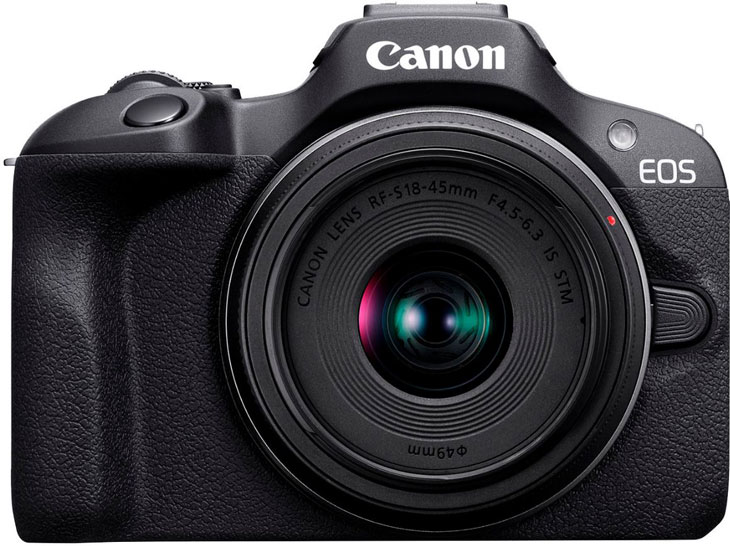
1. The best mirrorless cameras under 500 dollars
Canon R100 Camera
Price: $499 (approx.)
Deals Available at
Key Features:
- 24.1 MP APS-C CMOS sensor
- Dual Pixel CMOS Autofocus
- Full HD and 4K video recording (with a 1.5x crop)
- Compact and lightweight design
Why It’s Great for Beginners:
- Easy-to-use interface suitable for those new to photography.
- Excellent image quality with Canon’s trusted color science.
- Budget-friendly APS-C mirrorless option.
Cons:
- Limited 4K recording with a significant crop.
- Fixed Display
If you are interested in photography, then without a doubt, the Canon R100 camera is one of the best cameras Canon has ever made. The price range of the camera is 499 dollars, which suits your budget. At the same time, the camera can record high-quality images with its APS-C sensor. The camera is also able to record Full HD videos with full-time Dual Pixel CMOS autofocus support. Additionally, 4K video recording is possible with a 1.5x crop. So, it is recommended for photographers only.
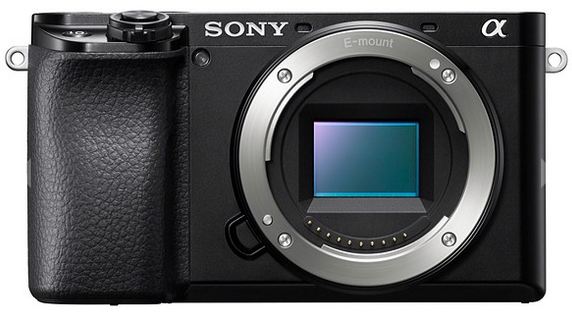
2. Best Budget Hybrid Camera Sony A6100 Camera in 2025
The Sony A6100 camera is available at 598 dollars (body only). For a kit lens or any prime lens, you need to spend extra, so it’s for those who have a slightly flexible budget beyond $500.
Price: $598 (Body only)
Deals Available at
Key Features:
- 24.2 MP APS-C sensor
- Uncropped 4K 30fps video recording
- 180° tilting display for selfies and vlogging
- Built-in electronic viewfinder
Why It’s Great for Beginners:
- Reliable autofocus system for stills and video.
- Compact body with professional-grade features.
- Excellent for content creators who are upgrading.
Cons:
- Slightly over $500 price range.
- Kit lenses are sold separately, adding to the cost.
The Sony A6100 camera is one of the best cameras Sony has ever made. It features a 24-megapixel APS-C sensor, uncropped 4K 30 fps video recording, and a 180-degree tilting display screen. You can record videos or create content effortlessly. The camera also features an electronic viewfinder, so you can capture images like a professional photographer. More or less, this is one of the feature-packed cameras available in a very reasonable price range. So, we have included this camera in our list. If possible, stretch your budget a bit more, and for sure, the Sony A6100 camera is one of the best cameras your money can buy.

3. Best M4/3 Camera Under $500 in 2025
Price: $499 (with 12-32mm kit lens)
Deals Available at
Key Features:
- 20.3 MP Micro Four Thirds sensor
- DFD (Depth from Defocus) autofocus system
- High-quality electronic viewfinder
- Compact and lightweight design
Why It’s Great for Beginners:
- Affordable interchangeable lens camera.
- Ideal for both photography and video creation.
- Easy to handle and learn.
Cons:
- Contrast-based autofocus is slower than hybrid systems.
The Panasonic G100D camera features a 20-megapixel Micro Four Thirds sensor and a DFD autofocusing system (Depth From Defocus). For photographers, this camera is a bargain under 500 dollars, especially with the 12-32mm kit lens. The camera also features a high-quality OLED electronic viewfinder. With this camera, you can capture snapshots as well as create content. However, the DFD autofocusing system is contrast-based, so it is not as fast as the hybrid AF system of the Sony A6100 camera. It is reliable but slightly slow. If your budget is very limited to under 500 dollars and you want an interchangeable lens camera for both photography and videography, the G100D is a good option.
Best blogging cameras available under 500 dollars
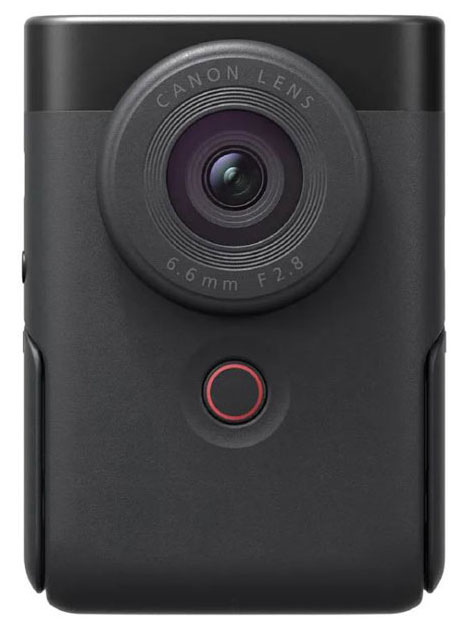
4. Best Canon Vlogging Camera Under $500 in 2025
Canon V10
Price: $300 (approx.)
Deals Available at
Key Features:
- Compact design with a 1-inch sensor
- 4K video recording at 30fps
- High-quality built-in microphone
- Simple controls for easy operation
Why It’s Great for Beginners:
- Perfect for vlogging and content creation on a tight budget.
- Highly portable and easy to use on the go.
- Affordable price point.
Cons:
- Basic features compared to other cameras.
The Canon V10 is a small 1-inch sensor-based compact camera specifically made for content creation. The camera is able to record 4K videos at up to 30 fps and features a high-quality inbuilt microphone. With very few controls and a compact body, the camera is highly suitable for on-the-go vloggers, especially if you have a limited budget of 300 dollars. This camera will suit your needs perfectly.
If your budget allows, and you can stretch up to 600 dollars, we have an amazing option:
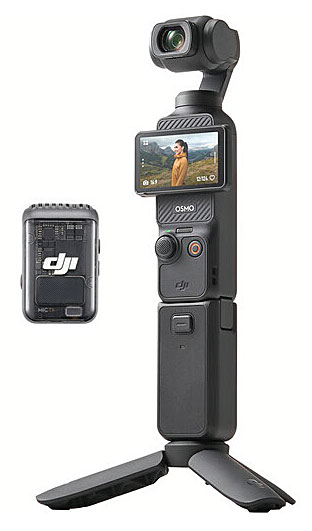
5. The Best Vlogging Kit With a Camera, Gimbal, and Wireless Mic
The DJI Pocket 3 Creator Kit with Accessories and Wireless Microphone
Price: $699 (approx.)
Deals Available at
Key Features:
- 1-inch sensor for high-quality footage
- Built-in 3-axis gimbal for stabilization
- Includes wireless microphone for crisp audio
- Compact, portable design
Why It’s Great for Beginners:
- Simplifies content creation with built-in stabilization and mic.
- Ideal for travel vlogging or handheld shooting.
- Easy to carry and operate.
Cons:
- Over $500 budget for entry-level users.
- Limited still photography capabilities
The DJI Pocket 3 Creator Kit features a high-quality 1-inch sensor. The camera is attached to a handheld gimbal that completely stabilizes your footage, even if you’re moving fast. The camera also includes gyro-based image stabilization for ultra-smooth footage. Additionally, the kit comes with a wireless microphone, which is essential for clean audio. All these features are packed into a device priced around 600 dollars. If you can stretch your budget, this is the best time to invest in a device like this for content creation.
The best Sony compact camera for creating content in 2025
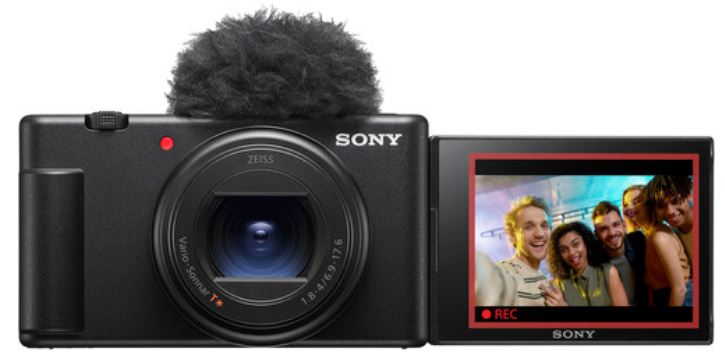
6. Best Sony Compact Under $500 in 2025
Sony ZV-1F
Price: $398 (approx.)
Deals Available at
Key Features:
- 20.1 MP 1-inch sensor
- 4K video recording
- Flip-out touchscreen for vlogging
- Compact design
Why It’s Great for Beginners:
- Designed specifically for content creators.
- Simple operation with high-quality video output.
- Reliable autofocus system.
Cons:
- No gimbal-like stabilization.
- No wireless mic include
The Sony ZV-1F is the best compact camera Sony has ever made under the 500-dollar price range for creating content on the go. Although it lacks a wireless microphone or a gimbal-like stabilization as found in the DJI Pocket 3 Creator Kit, it records excellent videos. If you prefer a Sony compact camera, this is a great option in the 500-dollar price range. However, if you can stretch your budget, the DJI Pocket 3 Creator Kit remains the most recommended device on this list.
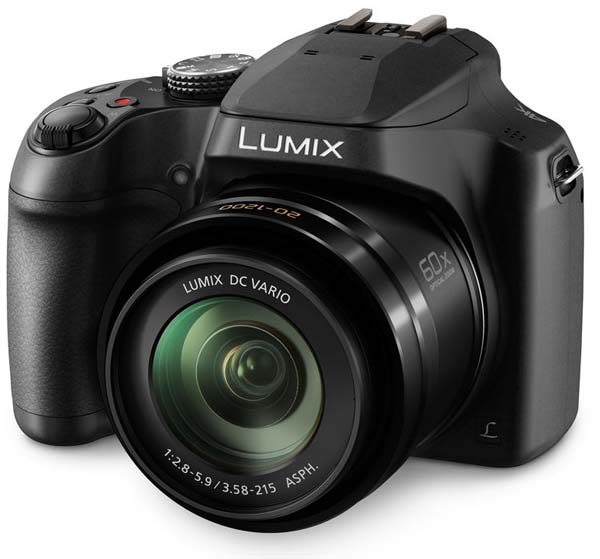
7. Best mega zoom Compact camera in 2025 under 500 dollars
Panasonic Lumix FZ80
Price: $450 (approx.)
Deals Available at
Key Features:
- 18 MP sensor with a 60x optical zoom lens
- Power O.I.S. (Optical Image Stabilization)
- Full HD and 4K video recording
- 10fps continuous shooting speed
Why It’s Great for Beginners:
- Versatile zoom lens for wildlife and travel photography.
- Affordable for a superzoom camera.
- Easy-to-use features for casual photographers.
Cons:
- Small sensor size limits low-light performance.
The Panasonic Lumix FZ80 features a 16-megapixel sensor and a high-quality Lumix DC Vario 60x optical zoom lens. With this lens, you can capture crisp and clear shots even at extreme focal lengths. The camera also supports Full HD and 4K video recording at up to 30 fps. Its ISO range starts from 80 and goes up to 3200. The camera’s continuous shooting speed is approximately 10 frames per second. This is one of the best budget-friendly cameras capable of capturing distant subjects with its 60x optical zoom lens.
The next camera is an instant camera that captures and prints images simultaneously
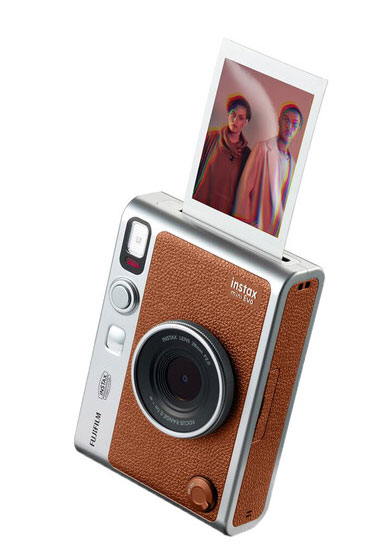
8. Best Instant Camera Under $200
Fujifilm Instax Mini EVO Hybrid Camera
Price: $200 (approx.)
Deals Available at
Key Features:
- 28mm fixed lens
- Instant print capability with Fujifilm Instax Mini films
- 3-inch LCD display
- Dual shutter buttons for ease of use
Why It’s Great for Beginners:
- Fun, instant-print feature for creative photography.
- Simple operation and retro design.
- Budget-friendly option.
Cons:
- Limited to fixed focal length.
- Image quality not comparable to larger sensor cameras
This camera, priced around 200 dollars, features a fixed 28mm f/2 lens, a 3-inch LCD display, and dual shutter buttons. You can save images on an SD card or print them instantly using Fujifilm Instax Mini films.
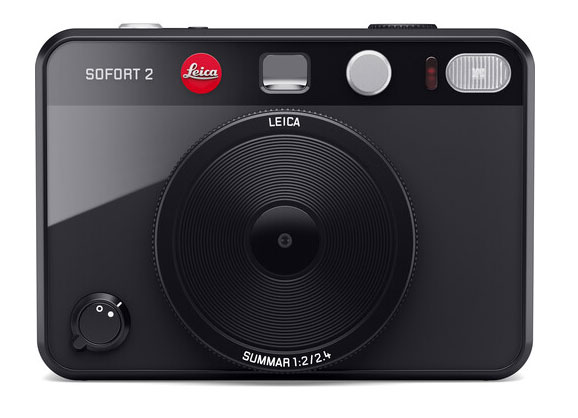
9. Only Leica Camera Under $500 in 2025
Leica Sofort Instant Camera
Price: $400 (approx.)
Deals Available at
Key Features:
- 28mm fixed lens
- Built-in flash and rechargeable battery
- Accepts Sofort instant film
- Compatible with Leica Photos app for editing
Why It’s Great for Beginners:
- Elegant design and excellent build quality.
- Easy-to-use instant camera with premium features.
- Rechargeable battery adds convenience.
Cons:
- High price for an instant camera.
- Limited creative control compared to digital cameras.
The Leica Sofort Instant Camera is priced under $400. It accepts Sofort film, features a 28mm f/2 lens, and has a 3-inch TFT display screen. It includes a built-in flash and a rechargeable lithium-ion battery. You can save images on a microSD card and customize your photos with the Leica Photos app.
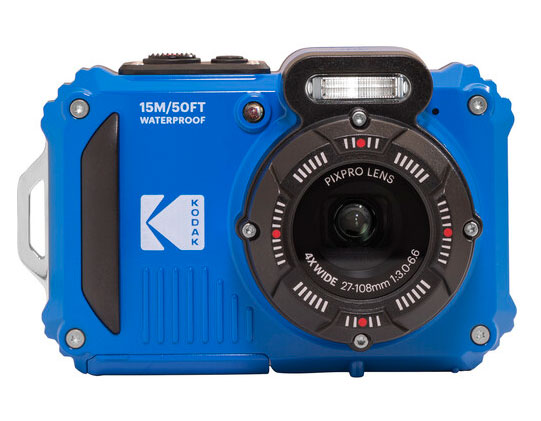
10. Best camera for kids under $200 in 2025
Kodak PixPro WPZ2
Price: $200 (approx.)
Key Features:
- 16 MP BSI CMOS sensor
- 4x optical zoom lens
- Waterproof and rugged design
- Full HD video recording
Why It’s Great for Beginners:
- Perfect for kids and adventure photography.
- Durable design for rough use.
- Affordable and easy to handle.
Cons:
- Limited manual controls.
- Smaller sensor affects image quality in low light
Deals Available at
The Kodak PixPro WPZ2 is a rugged camera featuring a 16-megapixel BSI CMOS sensor for high-quality images. It has a 4x optical zoom lens, is waterproof up to 49 feet, and is freeze-proof. The camera features a 2.7-inch LCD and captures Full HD videos at 30 fps. It is a great choice for kids or for capturing trip photos and videos.
See More – Top 10 Best Cameras Under $1000 in 2025
By admin, on October 12th, 2024

So finally, we have the Fuji X-M5 camera’s full details coming straight from Fujifilm X-M5 official press release. From the available set of details, we can clearly see the specs that are about to arrive inside the Fuji X-M5 camera. We will only miss the mechanical image stabilization, although the Fuji processor delivers very effective images. Take look at the Makor specification of the camera
Fuji X-M5 Price
Fujifilm X-M5 Body: £799 / €899- B&H Store
Fujifilm X-M5 + XC 15-45 Kit: £899 / €999 – B&H Store
Fujifilm XF 500mmF5.6 Lens: £2,899 / €3,399
Fujifilm XF 16-55mmF2.8 II: £1,149 / €1,349
Fuji X-M5 Specification
- Weight: Approximately 355g (including battery and memory card).
- Dimensions: 111.9mm width, 66.6mm height, 38.0mm depth.
- Sensor: 26.1 MP back-illuminated X-Trans CMOS 4 sensor.
- Processor: X-Processor 5 for high-speed image processing.
- Film Simulation: 20 Film Simulation modes.
- Autofocus (AF): AI-based subject detection AF (animals, cars, etc.).
- Face/Eye Detection: Supports face and eye AF.
- AF Algorithm: Predictive AF algorithm for moving subjects.
- Video Recording: 6.2K/30P 4:2:2 10-bit internal recording.
- 4K Video: Supports 4K/60P recording.
- High-Speed Video: 1080/240P recording.
- Stabilization: Powerful digital image stabilization for both minor and large shakes.
- Built-in Microphones: Three microphones with selectable directivity (surround, front, back, front & back).
- Noise Reduction: Steady-state noise reduction for continuous frequency noise.
- Vlog Mode: Touch-based intuitive control for shooting.
- 9:16 Short Movie Mode: Easy vertical video capture for social media.
- Bit Rates: Supports 8 Mbps and 25 Mbps bit rates for video.
- Card Slot: SD card storage for internal recording.
- Design: Symmetrical dials with a compact X-series aesthetic.
- Auto Mode: Auto scene recognition for first-time users.
- Low Power Consumption: Optimized for long shooting times.
- Bird & Insect Detection: Special AF setting to detect birds and insects.
- Drone Detection: Detects drones under the “Airplane” setting.
- Display: Touch-sensitive LCD with improved icon placement.
- High AF Precision: Improved precision even in low-contrast environments.
Fuji X-M5 Full Press Release and Images
These specs highlight the Fuji X-M5’s compact design, high-quality video recording
FUJIFILM X-M5 Mirrorless Digital Camera
The lightest model in the current X series
Equipped with advanced features for both stills and video. Enjoy shooting every day with ease
October 14, 2024

TOKYO, October 14, 2024 – FUJIFILM Corporation (President & CEO, Representative Director: Teiichi Goto) announces the launch of the latest model of the mirrorless digital camera the “FUJIFILM X-M5” (X-M5). It is a new addition to the X Series of mirrorless digital cameras known for their compact and lightweight body and superior image quality based on the company ’s proprietary color reproduction technology.
The X-M5 is a mirrorless digital camera with a compact and lightweight body weighing approximately 355g*1 making it the lightest*2 camera in the X series. The X-M5 is equipped with a full range of functions, including subject detection AF that can detect moving objects such as animals and cars using AI and a 6.2K/30P movie recording function, making it possible to shoot both still images and movies with a single camera. Additionally, the design features the high-quality appearance characteristic of the X series. The X-M5 is the perfect camera for a wide range of users, from first-time digital camera users to photography enthusiasts, enhancing the joy of photography.
The X-M5 is a mirrorless digital camera equipped with the back-side illuminated 26.1-megapixel “X-Trans™ CMOS 4”*3 sensor and the “X-Processor 5” high-speed image processing engine, enabling high-quality image capture. A Film Simulation dial is located on the top surface of the warship to switch between “Film Simulation” modes, which allows users to enjoy various color tone expressions as if they were changing photographic film. The X-M5 is equipped with high-performance video recording functions such as 6.2K/30P 4:2:2 10-bit video onto an SD card inserted in the camera. In addition, its powerful digital image stabilizer and high-performance built-in microphone support comfortable video recording. As for the Vlog Mode, the newly introduced “9:16 Short Movie Mode” makes it easy to shoot vertical videos.
*1 Including battery and memory card.
*2 For current X series models.
*3 X-Trans is a trademark or registered trademark of FUJIFILM Corporation.
1. Product features
(1) Compact and lightweight body and product design that makes you want to enjoy shooting
▪ It weighs approximately 355g and measures approximately 111.9mm in width, 66.6mm in height, and 38.0mm in depth. The extremely lightweight and compact body for a mirrorless digital camera makes it easy to carry around and enjoy photography every day.
▪ Despite its compact size, the camera has the high-quality appearance of the “X series”. Symmetrically placed dials on the top surface of the warship section highlight the beauty of the camera.

▪The Film Simulation dial is conveniently placed on the lek shoulder of the top face. Users can easily switch between a total of 20 Film Simulation modes according to the subjects and scenes, making it easier to enjoy a variety of color tones in both still and moving images.
▪ The top right features a mode dial. In AUTO mode, the camera automatically recognizes the optimal shooting mode for the scene, allowing even first-time digital camera users to easily capture high-quality stills and videos.
(2) Equipped with a high-performance sensor and high-speed image processing engine to achieve high image quality and high-performance AF
▪ The X-M5 is equipped with the back-illuminated “X-Trans™ CMOS 4” sensor with approximately 26.1 megapixels and the latest high-speed image processing engine “X-Processor 5”. This allows for high image quality photography with low power consumption.
▪ The camera features the subject detection AF, developed with deep learning technology, in addition to the existing Face / Eye AF. AI is used to add the ability to detect animals, birds, cars, motorcycles, bicycles,
airplanes, trains, insects and drones*4
▪ The latest AF predictive algorithm provides high tracking performance for moving subjects and high precision AF in low-contrast environments.
*4 Set the Subject Detection Selng to “BIRD” when you want to detect insects and to “AIRPLANE” when you want to detect drones.
(3) 6.2K/30P video recording and other extensive video func^ons
▪ The X-M5 can record 6.2K/30P 4:2:2 10-bit video onto an SD card inserted in the camera, and also supports extensive video functions including 4K/60P and 1080/240P capability.
▪ The camera is equipped with powerful digital image stabilization. It is effective not only for minor camera shake but also for large shaking that occurs when shooting video while walking.
▪ For the first time in our digital camera lineup, three built-in microphones are equipped. You can choose from four microphone directivity options: surround, front, back, or front & back, depending on the situation. The camera is also the first to feature a steady-state noise reduction function, which reduces noise that continues to ring at a certain frequency, such as air conditioning noise.
▪ Vlog mode allows users to change shoo^ng conditions intuitively by touching the LCD. Improvements in the number and placement of icons make video recording even more intuitive. In addition, the new “9:16 short movie mode” allows users to easily shoot vertical videos popular on various social media and smoothly share the captured content.
▪ New bit rates of 8 Mbps and 25 Mbps have been added to the bit rates that can be selected in the “Media Recording Settings” when shooting video. This shortens the transfer time to external devices such as
smartphones, and contributes to shortening the ^me required to upload captured video directly to social media.
2. optional accessories
Cooling Fan “FAN-001″*5 (already on sale)
▪ This cooling fan can be attached to the rear panel of the camera body without a cable, supporting long hour shooting and video recording in a high-temperature condition. The power can be supplied to the fan from the camera body
Tripod Grip “TG-BT1″*6 (already on sale)
▪ This grip enhances mobility and camera’s hold while adding tripod functionality. Users can comfortably take self-portraits and low angle shots, where it is normally difficult to hold the camera in position. As a tripod, the TG-BT1 can be used for a wide range of love fujiru mors applications from group shots to tabletop still.
*5 Compatible models are FUJIFILM X-M5, FUJIFILM X-H2S, FUJIFILM X-H2, and FUJIFILM X-S20.
*6 Compatible models are FUJIFILM X-H2S (Ver.3.00 or later), FUJIFILM X-H2 (Ver.1.2 or later), FUJIFILM X-T5 (Ver.1.00 or later), FUJIFILM X-T4 (Ver.1.70 or later), FUJIFILM X-T3 (Ver.4.50 or later), FUJIFILM X-S20, FUJIFILM X-S10 (Ver. 2.60 or later), FUJIFILM X-T30 II (Ver. 1.20 or later), FUJIFILM X-T30 (Ver. 1.50 or later).
source of the press release and images credit FR.com
By admin, on August 6th, 2024
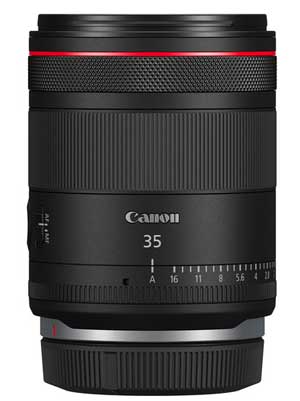
See the latest deals on Canon RF35mm F1.4 Lens at Amazon.com
According to the latest rumors we have from the rumor mill, after the amazing success of the Canon RF35mm F1.4L VCM lens, Canon is now planning two new VCM lenses, the RF 24mm F1.4 and RF 50mm F1.4L VCM. Both of them are coming in September 2024. The source of the rumor mill also added, “I suspect that you will need an EOS R5 Mark II and an EOS R1 to take advantage of the full capabilities of this lens (which will likely have some cool automation features never before seen).
Get LIVE RUMORS –> FACEBOOK | TWITTER | INSTAGRAM to get live news + Canon rumors 24X7
source CR.com
By admin, on July 6th, 2024
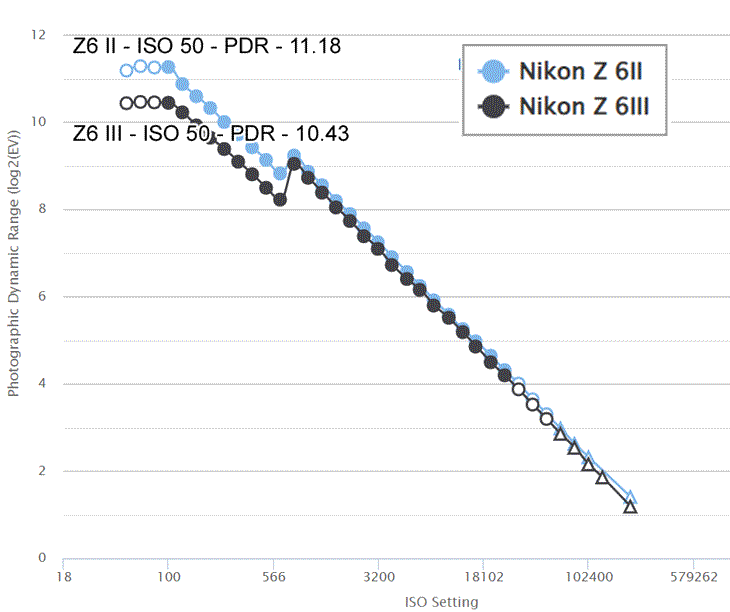
Recently, results from a dynamic range test published on March 6 by the Photons to Photos website show that the dynamic range of the recently announced Nikon Z6 Mark 3 camera is not as good as that of the Nikon Z6 Mark 2. Moreover, if you compare it with the Nikon Zf, you will notice that both the Nikon Z6 Mark 2 and the Zf have very similar dynamic ranges. However, the dynamic range of the Nikon Z6 Mark 3 is not up to the mark.
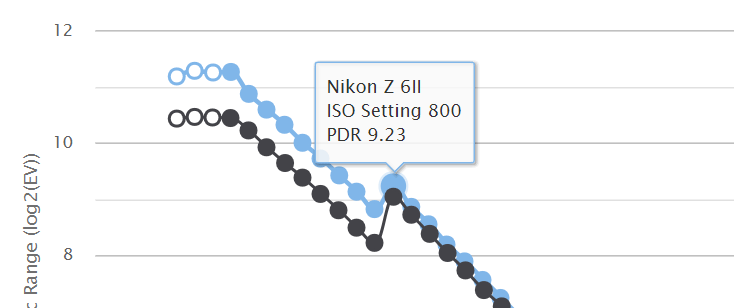
Specifically, the lower ISO dynamic range up to ISO 800 differs in the Z6 Mark 3 and Z6 Mark 2, with the Z6 Mark 3 camera sensor suffering from detail loss. So, suppose you are using your camera, specifically the newly announced Z6 Mark 3, in an ISO range of 100 to 800. In that case, you have to face detail loss, specifically in the shadowed area, which cannot be recovered as much as we have the capability in the Z6 Mark 2.
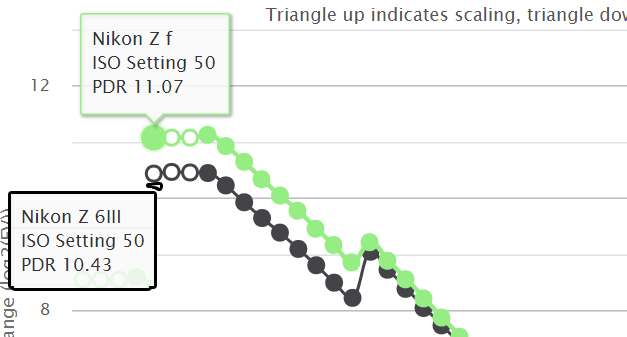
The Reason Why It’s Happening
The reason is clear since the Nikon engineers used the partially stacked CMOS sensor in the Nikon Z6 Mark 3 camera. Now, what happened in the previous generation sensor was that the readout speed was slow. Although it was not that good for sports and wildlife photography, due to the slower readout speed, each photodiode in the sensor was able to observe the incoming light perfectly. Now, in the partially stacked CMOS sensor, what they have done is they have replaced the circuitry just below the photodiodes in a similar manner to what a stacked sensor has. But due to the partial update, they somehow managed to increase the sensor’s readout speed. However, in the very same situation, the photodiodes are not able to grab the proper amount of light in a short period / High Speed, which is 12.4 milliseconds approx compared to the readout speed of the Nikon Z6 Mark 3 camera sensor which is approximately somewhere around 22 milliseconds.
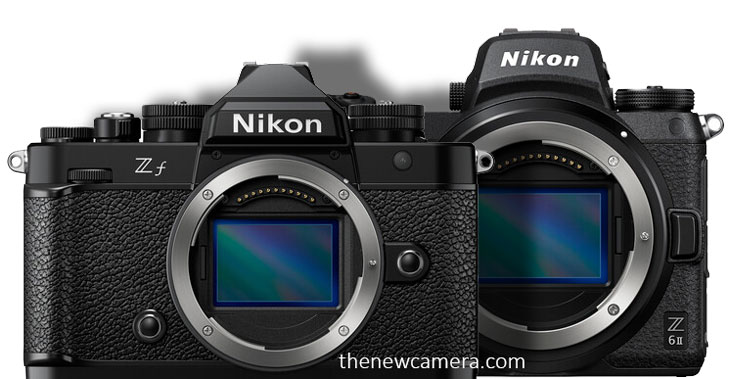
Nikon Zf from Amazon.com | Nikon Z6 II Amazon.com
So having a slower readout speed is not always a negative part of your camera system.
Having a slower readout speed helps to grab the incoming light properly. Suppose you are not in a hurry or not always shooting sports or wildlife. In that case, it is recommended to have a camera sensor with a slightly slower readout speed, specifically in Nikon cameras like we have in the Zf camera. The Z6 Mark 3’s sensor is significantly faster but despite that fact, we can extract the maximum dynamic range possible for the given scene with the Zf.
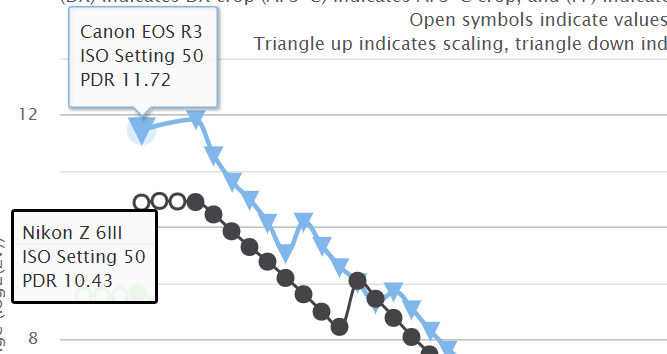
Comparing the Nikon Z6 Mark 3 Camera Sensor Dynamic Range with Canon R3 24 Megapixel Stacked CMOS Sensor
When we compare the dynamic range of the Canon R3 camera with the Nikon Z6 Mark 3, which is of course not that much feasible due to the price difference between the two cameras, the R3 has a similar resolution of 24 megapixels and a fully developed stacked CMOS sensor. Now in the test, we have found that the Nikon Z6 Mark 3 camera performs quite worse than the Canon R3 sensor. Surprisingly, when we also included the Nikon Z6 Mark 2 in the test charts, we were surprised that the Canon R3 camera’s 24-megapixel full-frame sensor is even performing better in the lower range compared to the Z6 Mark 2 camera sensor, specifically in terms of dynamic range.
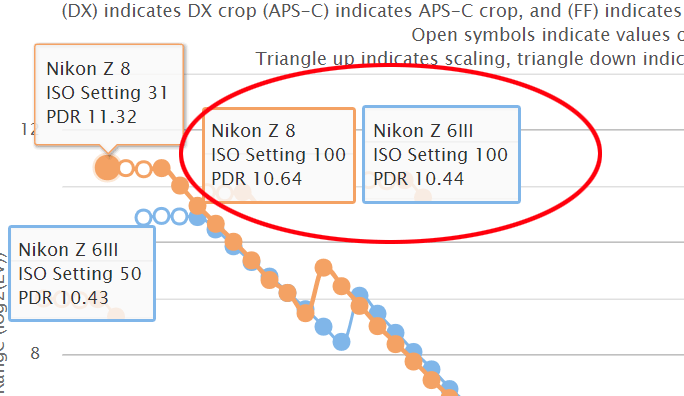
Comparing the Nikon Z6 Mark 3 Camera Dynamic Range with the Nikon Z8 Camera
In the dynamic range test score against the Nikon Z8 camera, we have found that in the very base ISO range starting from the base ISO 32 to 50 to 80, the dynamic range test score of the Z8 camera is better than that of the Z6 Mark 3. But as soon as you cross the base ISO 100, the dynamic range of both cameras becomes very similar when compared to each other. So that’s a fact that even if you have a camera with that much amount of pixel resolution, the dynamic range of the Z8 camera remains limited or performs well up to ISO 100 only. After that, it is very similar to the Z6 Mark 3. And if you compare it with the Z6 Mark 2, you will notice that the Z6 Mark 2 camera does have a slightly better dynamic range test score compared to the Z8.
Follow us on our social pages FACEBOOK | TWITTER | INSTAGRAM, If you have time –>see more Sony Alpha Rumor
source photonstophotos
By admin, on July 25th, 2022
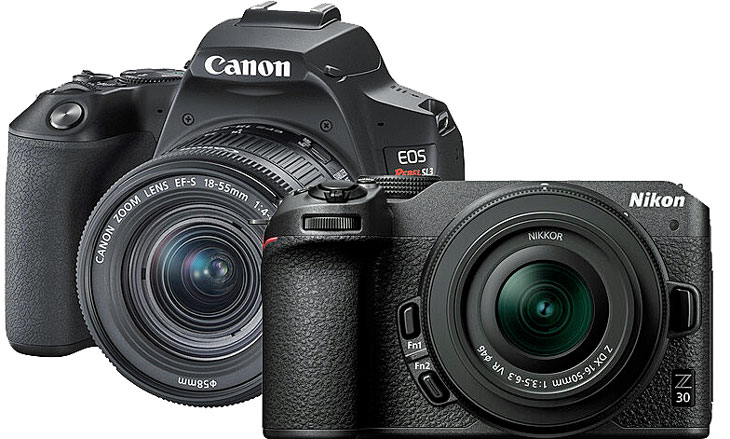
We are getting lots of requests for this comparison from our subscribers, we are comparing the major differences between the two. Not only Major we will also include an image quality test. To find out the best camera between the two
We have the Nikon Mirrorless camera against the Canon DSLR, I do agree that Nikon Z30 is a Mirrorless camera but at the same time, the Canon 200D isn’t a traditional DSLR. It’s a Fusion of Mirrorless in a DSLR body.
1. Viewfinder
Design-wise both cameras are slightly different, although both of them have very deep handgrip. If ur photographer au will fell very comfortable with each of them. The main issue with Nikon Z30 is the absence of EVF / OVF. But, if you’re coming from the smartphone generation then you won’t miss the viewfinder of the camera, but if you’re a photographer who is using Viewfinder in their DSLR they may miss it.
2. Auto Focus system
Nikon Z30 AF system now supports continuous burst up to 11 FPS with full-time AF support. As usual Canon 200D, Mark II has a limited 5.5 FPS burst speed when ur using the EVF, and when you switch to a better AF system/sensor based / display is active then Canon 200D Mark II AF speed drops to 3 FPS.
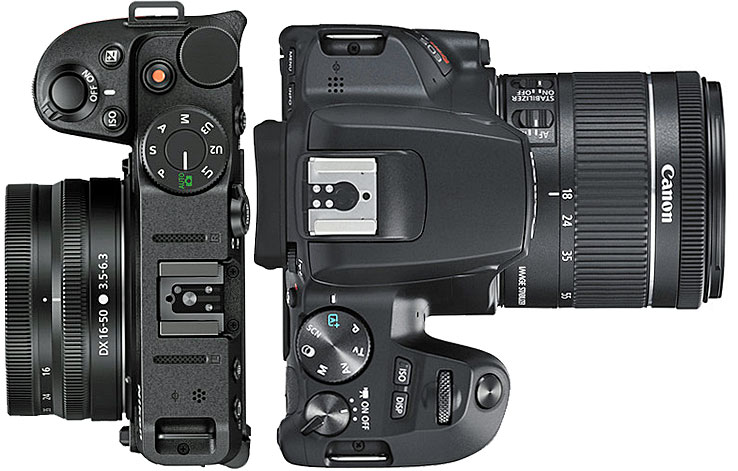
Earlier when the Nikon Z50 camera was announced roughly two years back, the AF system of the Nikon Z50 was weak and slow. But, with constant firmware updates the AF system has been improved to the next level and now we are able also to track human eyes in the video, and animal eye AF is also enabled in firmware 2.0. With the same pre-loaded firmware the Nikon Z30 camera has arrived with the same image sensor and image processor. So, we are expecting an enhanced AF performance this time with the Nikon Z30 camera. And it’s not only on paper, if you look at the AF sensitivity range of the camera it is far better than that of the Canon 200D Mark II DSLR.
AF comparison table
| Focus Type |
Auto and Manual Focus |
Auto and Manual Focus |
| Focus Mode |
Continuous-Servo AF, Manual Focus, Single-Servo AF |
Automatic, Continuous-Servo AF, Manual Focus, Single-Servo AF |
| Autofocus Points |
Photo, Video
Phase Detection: 209 |
Phase Detection: 9 (1 Cross-Type) |
| HYbrid AF |
209 |
143 AF Zones / 3975 AF points |
| Autofocus Sensitivity |
-4.5 to +19 EV |
-0.5 to +18 EV |
It doesn’t mean if Nikon Z30 is loaded with an enhanced AF algorithm, our Canon 200D Mark II DSLR becomes inferior at any point. The Canon 200D Mark II 143 AF zones (3975 AF points) are really very helpful in tracking the human eye and face. And at the time when the 200D Mark II was announced it was the only DSLR with a 3D AF object tracking mechanism even the Fuji X-T200 doesn’t have that. But, now Nikon Z30 have 3D object tracking mode in the still and video too.
Overall, if we count the AF sensitivity and burst speed of both the camera Nikon Z30 wins clearly.
|
Nikon Z30 |
Canon SL3 / 200D Mark II |
| Shutter Type |
Electronic Shutter, Mechanical Focal Plane Shutter |
Electronic Shutter, Mechanical Focal Plane Shutter |
| Shutter Speed |
Mechanical Shutter
1/4000 to 30 Seconds
Electronic Front Curtain Shutter
1/4000 to 30 Seconds
Electronic Shutter
1/4000 to 30 Seconds |
Mechanical Shutter
1/4000 to 30 Seconds |
| Bulb/Time Mode |
Bulb Mode, Time Mode |
Bulb Mode |
| ISO Sensitivity |
Photo
100 to 51,200
Video
100 to 25,600 |
Photo
100 to 25,600 in Auto Mode (Extended: 100 to 51,200)
Video
100 to 12,800 |
| Exposure Compensation |
-5 to +5 EV (1/3, 1/2 EV Steps) |
-5 to +5 EV (1/3, 1/2 EV Steps) |
| Metering Range |
-4 to 17 EV |
1 to 20 EV |
| White Balance |
2500 to 10,000K
Presets: Auto, Cloudy, Color Temperature, Direct Sunlight, Flash, Fluorescent, Incandescent, Preset Manual, Shade |
Presets: Auto, Cloudy, Custom, Daylight, Flash, Fluorescent (White), Shade, Tungsten |
| Continuous Shooting |
Up to 11 fps at 20.8 MP |
Up to 5 fps at 24.1 MP for up to 10 Frames (Raw) / Unlimited Frames (JPEG) |
| Interval Recording |
Yes |
Yes |
| Self-Timer |
2/10-Second Delay |
2/10-Second Delay |

3. Image Quality
The Nikon Z30 uses the same 20MP sensor and Expeed 6 image processor we have seen in the Nikon Z50 camera, so we have decided to make a high ISO test between the Canon 200D mark II and the Nikon Z30, with a promise once the Z30 samples are available we will update this page too.
Initial High ISO test comparison, we can clearly notice that the Nikon Z50 / Z30 camera is able to preserve more details compared to the Canon 200D Mark II camera. So, we have added one more high ISO test image here @ISO 12800. In both, images it’s very clearly visible that Nikon 20MP sensor’s low-light performance is better than of Canon 24MP sensor used in the Canon 200D Mark II camera.
So, if you are working in an uncontrolled light environment then Nikon Z3 is best for you, otherwise, if you work with light / you work in the studio or always have portable lights with you then Canon 200D Mark II will also perform better.
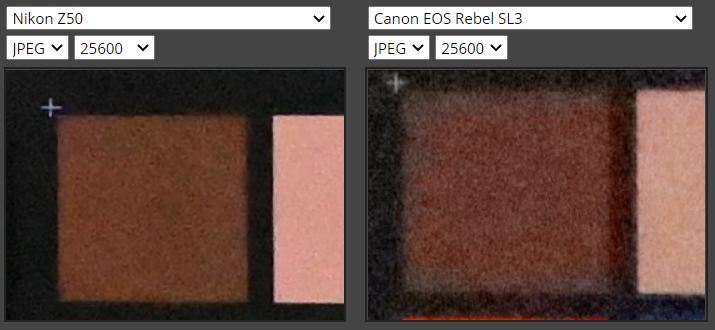
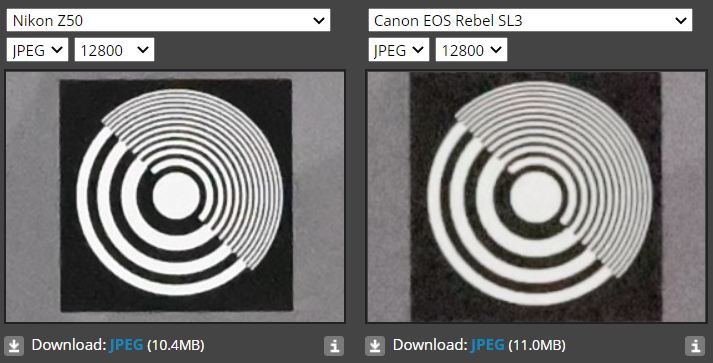
4. Video Quality
Nikon Z30 camera captures oversampled 4k 24, 30 fps video. Oversampled video means the Nikon Z30 camera is using the entire 20MP sensor each pixel to create Oversampled 6K Video, so the quality we get from the Nikon Z30 video is just phenomenal. The color, contrast output, and shadow details are very good and usable. On the other side, we have a Canon 200D Mark II camera that creates video by sub-sampling / line-skipping method, so the details are not coming through the entire sensor. Although I have used the Canon 200D Mark II as a video camera and the Full HD video quality looks good to me. Also, kindly note that now Nikon Z30 doesn’t have any 30min recording limit.
In the end, I have to mention that in Canon 200D Mark II / SL3 we have to face an excessive crop of 1.6X. So, we already have a 1.6X cropped sensor and over that again we have to face a 1.6X crop. And the worst part is the DPAF gets disabled when you use the 4K video mode of the Canon 200D mark II or SL3 camera. No, such issue i am able to find in the Nikon Z30 camera.
|
Nikon Z30 |
Canon SL3 / 200D Mark II |
| Recording Modes |
H.264/MOV/MP4
UHD 4K (3840 x 2160) at 23.98p/25p/29.97p
Full HD (1920 x 1080) at 23.98p/25p/29.97p/50p/59.94p/100p/119.88p |
MP4/H.264
UHD 4K (3840 x 2160) at 23.98p/25p [120 Mb/s]
Full HD (1920 x 1080) at 25p/29.97p/50p/59.94p [12 to 60 Mb/s] |
| Recording Limit |
Up to 125 Minutes |
Up to 29 Minutes, 59 Seconds |
| Video System |
NTSC/PAL |
NTSC/PAL |
Viewfinder and display
|
Nikon Z30 |
Canon SL3 |
| Viewfinder |
No |
Yes, OVF |
| Size |
3.0″ |
3.0″ |
| Resolution |
1,040,000 Dot |
1,040,000 Dot |
| Display Type |
Articulating Touchscreen LCD |
Articulating Touchscreen LCD |
5. Verdict
If you are a photographer and want to get everything within budget, which includes Canon’s super affordable 50mm F1.8 lens, then you should go with SL3. Since the price and availability of lenses is the only factor where the Nikon Z30 fails to impress us. Otherwise, if we talk about sensor performance, Autofocus, or Video recording modes. Nikon Z30 is a clear winner.
Get Canon 200D Mark II from Amazon | B&H Store
Get Nikon Z30 From B&H Store | Amazon.com
Canon 200D Mark II / SL3 Best Lenses
Support us – Use or affiliate link Amazon.com | B&H Store for the next purchase u make – it helps us
By admin, on September 19th, 2014
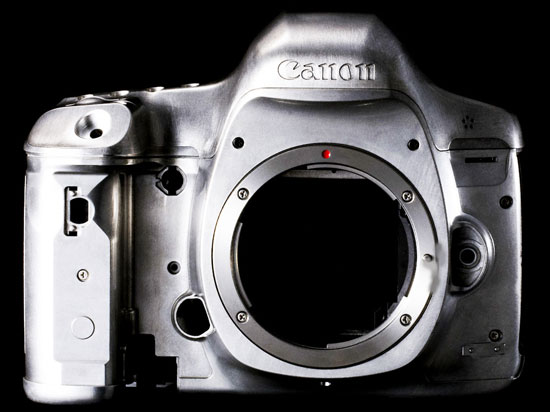
According to latest rumors Canon may announce a new high-end DSLR next month, the resolution will be 46 Megapixel and price is expected to be around $8000-$9000 USD.
A bit analysis …
At this moment we don’t know its specification but a but if we grab 46 Megapixel from a single layer fullframe sensor than we will sure get a limited ISO performance, possibly ranging form 50-6400/12800. We do hope this time Canon should implement a multilayer sensor to avoid poor / limited performance during low-light condition, also take a look — we have already seen the Canon Patent Five Layer Sensor, and also a Three-Layer sensor from Canon,
Other part is image processor and AF system for a $8K-9k body, Canon will sure implement Dual Digic 6 image processor and 61-Point High Density Reticular AF system (same as of 1DX) or better than that in the upcoming DSLR.
Earlier predictions and expectations …
Also if you have time Read the article written by our experts – What to expect from Canon ? published on August 14th, 2014
STAY WITH ON FACEBOOK | TWITTER | GOOGLE+ to get live news + rumors 24X7+
src – Psychic1
By admin, on February 3rd, 2014
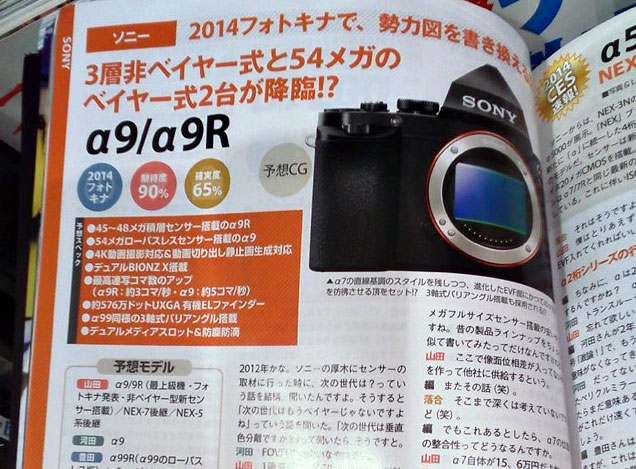 The recent rumor published at Japanese magazine suggest that Sony may announce A9 and A9R camera this year, we also published the Impress Japan / nippon magazine predictions last year and approx 50% of the rumor were true (see 2013 predictions here and here) now take a look at the rumored specification below The recent rumor published at Japanese magazine suggest that Sony may announce A9 and A9R camera this year, we also published the Impress Japan / nippon magazine predictions last year and approx 50% of the rumor were true (see 2013 predictions here and here) now take a look at the rumored specification below
Sony A9 / A9R Rumored specification
54 MP Full Frame Exmor CMOS Sensor
Dual BIONZ X Image Processor
Dual memory card slots
The rumor look bit true to me because Nikon D800 / 800E already pushed FF megapixel limit to 36MP last year (with Sony made sensors), According to rumors Canon is also testing a Megapixel Monster FF sensor camera (see here), so we may sure see a 54MP model from Sony in 2014.
stay with us (FACEBOOK | TWITTER | GOOGLE+) and see more Sony Rumor.
src-dpreviewforum
|
KEEP THIS BLOG ALIVE - Support New Camera Buy Canon Lenses, Buy Music CD or Digital Camera at amazon it helps this site, and you do not pay anything extra, it is just a way to help support this site.

|


























 The recent rumor published at Japanese magazine suggest that Sony may announce A9 and A9R camera this year, we also published the Impress Japan / nippon magazine predictions last year and approx 50% of the rumor were true (see 2013 predictions
The recent rumor published at Japanese magazine suggest that Sony may announce A9 and A9R camera this year, we also published the Impress Japan / nippon magazine predictions last year and approx 50% of the rumor were true (see 2013 predictions 



